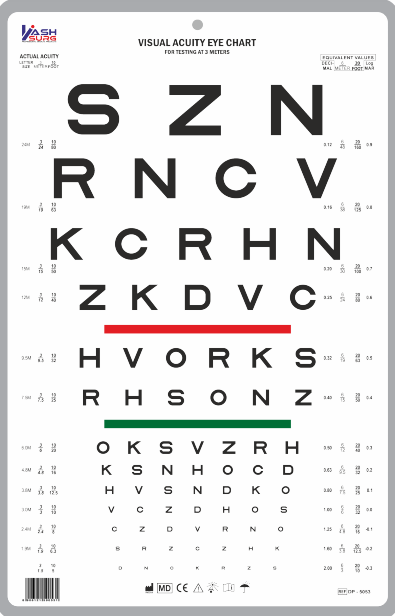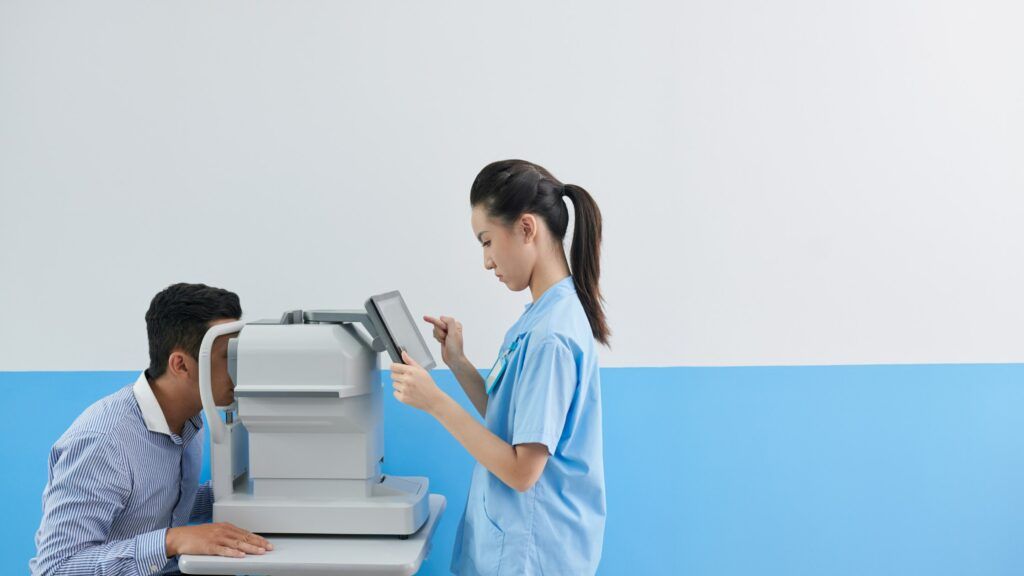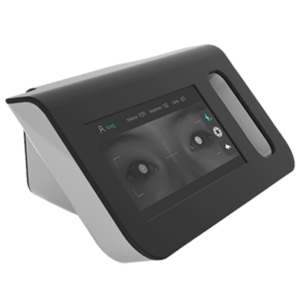As vision is one of the key senses, it is essential to ensure consistent monitoring of visual function to prevent and detect any abnormalities in patients. Vision screeners are a popular tool used by healthcare professionals to measure visual acuity and assess for changes in sight. In this blog post, we will explore in-depth the types, benefits, criteria to choose, and how to use and maintain vision screeners, including new technologies and innovation in the market.
Types of Vision Screeners
- Autorefractors: this type of vision screener is automated and measures the refractive error of patients without the need for patient feedback. It utilizes infrared light to capture and calculate the patient’s visual acuity.
- Tumbling E Charts: this tool involves displaying an E letter rotated at different angles, and the patient is asked to indicate the direction of each E.
- Snellen Charts: a Snellen chart is a common tool that involves showing letters of varying sizes at a set distance, and patients are asked to identify the smallest line they can read.
- Color Vision Screeners: This tool tests for colorblindness by assessing one’s ability to identify numbers or patterns of circles with different colors.
Benefits of Vision Screeners
- Early Detection and Prevention of Vision Problems: Vision screeners can detect vision problems at an early stage when it can be more effectively addressed and treated.
- Helps To Refine Existing Prescription Glasses and Contacts: Vision screeners assist in determining the unique prescription of the patient, which helps them to buy glasses or contact lenses required for clear vision.
- Assess Drivers License Applicants: Many countries utilize vision screeners to assess whether drivers meet required visual standards and are safe on the road.
Criteria to choose Vision Screeners
One should consider a variety of factors before selecting the right vision screener, including:
- Accuracy of the Results: The intended use of the device should have high accuracy, sensitivity, specificity, and reliability
- Portability: The device should be easy to carry around and handle in various settings.
- Ease of Use: The device should be user-friendly and easily operated by all healthcare professionals.
- Installation, Support, and Maintenance: Make sure to select a provider with installation, maintenance, and technical support to handle any issues.
How to use and maintain Vision Screeners
- Calibration: Make sure the device is calibrated correctly before conducting any tests.
- Cleaning: Regular cleaning of the device and its components, particularly lenses, can help improve the accuracy of the results.
- Power Management: Ensure that the power management of the battery-powered device is correctly managed.
- Protection: Protect the device from damage, dust, scratches and avoid exposing it to environmental hazards.
New Technologies and Innovation in Vision Screeners
- Mobile Apps: People can use mobile apps to assess their own vision, which could potentially revolutionize the healthcare system by removing the need to physically visit a doctor for basic vision screening tests.
- Portable Vision Screeners: Portable vision screeners are now available; these handheld devices are easy to use and transport to various locations where patients can be tested with a minimum of fuss.
- Remote Vision Screeners: These devices allow healthcare professionals to conduct vision screenings remotely, potentially saving valuable time and money.
Latest Advancements in Mobile App-Based Vision Screening Technologies
Mobile app-based vision screening technologies have come a long way over the past few years. Here are some of the latest advancements in this field:
- Virtual Reality Vision Tests: Many mobile apps now offer virtual reality-based vision tests that simulate real-world environments to measure visual acuity and assess other eye conditions.
- Artificial Intelligence Integration: AI-powered algorithms can analyze patient data collected using mobile apps and provide a comprehensive report on the patient’s vision health.
- Eye Tracking Technology: Certain mobile apps use eye-tracking technology to assess eye movements and identify issues such as depth perception, visual perception, and alignment.
- Visual Acuity Testing: Advanced mobile apps can now perform highly accurate visual acuity tests, which is ideal for remote eye care in developing countries where resources are scarce.
- Cloud-Based Data Management: Some of the latest mobile apps for vision screening have cloud-based data management features that allow healthcare professionals to electronically store and share patient data quickly.
Overall, these advancements in mobile app-based vision screening technology have significantly improved the accuracy and efficiency of assessing a patient’s vision health outside the traditional clinical setting.
Leading Manufacturer of Vision Screeners
Edusoft Healthcare Pvt. Ltd.
Introducing the AI-OPTICS Vision Screener by Edusoft Healthcare Pvt. Ltd., a groundbreaking device revolutionizing optic image processing. Harnessing superintelligent AI technology, this screener boasts an unparalleled 200% increase in accuracy compared to conventional vision screening methods. Despite its cutting-edge features, the AI-OPTICS Vision Screener is remarkably affordable, offering maximum precision at a fraction of the cost.
Experience a new level of comfort during eye screenings with the AI-OPTICS Vision Screener. Unlike traditional methods utilizing bright light, this device employs harmless, invisible infrared light, ensuring a pleasant and swift screening process. In mere seconds and from a distance of 1 meter (3.3 feet), patients can undergo comprehensive eye scans without discomfort or irritation.
Simplicity meets innovation with the AI-OPTICS Vision Screener. Its user-friendly design allows for effortless operation with just the push of a button. Obtain refractive state data for both eyes, including sphere and cylindrical values, along with pupillary distance, seamlessly and efficiently. Plus, with no need for maintenance or calibration, this AI eye screener offers hassle-free usability and storage.
Kashmir Surgical India Pvt. Ltd.
 Introducing the DP-5053 Visual Acuity Eye Chart by Kashmir Surgical India Pvt. Ltd., a premier tool crafted for precise vision testing and screening. Our logarithmic chart, built with traditional Sloan optotypes and adhering to the Snellen 5×5 grid, stands as a pinnacle of accuracy and reliability in vision assessment. Ideal for both literate adults and children, this chart ensures consistent and dependable results.
Introducing the DP-5053 Visual Acuity Eye Chart by Kashmir Surgical India Pvt. Ltd., a premier tool crafted for precise vision testing and screening. Our logarithmic chart, built with traditional Sloan optotypes and adhering to the Snellen 5×5 grid, stands as a pinnacle of accuracy and reliability in vision assessment. Ideal for both literate adults and children, this chart ensures consistent and dependable results.
At the heart of our eye chart lies the Logarithmic Minimum Angle of Resolution (LOGMAR) scale, enabling meticulous measurement of visual acuity and swift detection of potential vision issues. With standardized letter sizes and recognizable optotypes, our chart guarantees unparalleled precision in vision screening, paving the path for early intervention and optimal eye care.
Crafted from an extra-strong PVC sheet, our chart boasts durability and longevity while remaining effortlessly washable for hygienic use. The matte finish eliminates glare and reflections, facilitating clear and accurate vision testing in any environment. Optometrists, students, offices, and schools alike benefit from its robust construction and reliable performance.
Conclusion
In a nutshell, vision screeners play a vital role in detecting early signs of visual impairment in individuals, as well as ensuring that corrective procedures are timely carried out. Choosing the right vision screener for your specific requirements will depend on a range of factors such as accuracy, ease of use, maintenance and support, portability, and affordability. With constant development and advances in technology, vision screeners will continue to evolve and provide new and innovative ways to support visual health.



